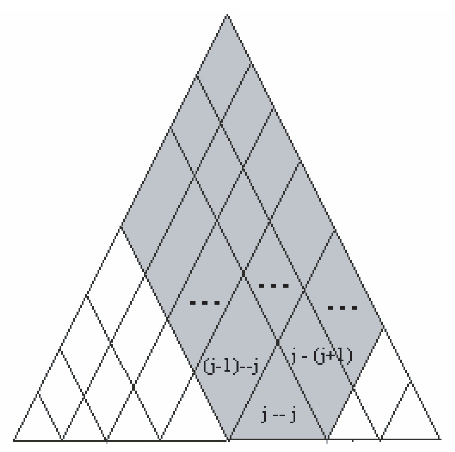4.1 To ease application of the probability density
functions, the probability density distributions for damage location,
extent, and penetration have been converted into a set of tables and
simple equations. These tables indicate the probability that the damage
is bounded on one side by a given longitudinal, transverse or horizontal
plane.
4.2 For example, the function pb(d)
is
the probability that damage is restricted to less than d,
the normalized damage location, given g(y), the probability
density distribution of extent of damage, h(x), the probability
density distribution of location, and c, the maximum
extent of damage. Similarly, pa(d)
is the
probability that damage is restricted to more than d.
4.3 These equations are repeated for all of the
damage probability calculations. For the cases involving penetration
they simplify to single integral equations. For the cases involving
both extent and location, special consideration must be given to the
ends of the density. The functions define the damage location as the
centre of damage. Damage zones towards the ends or sides of the ship
can span beyond the vessel. This explains why all the probability
tables do not extend to 1.00.

Integration Region for Integrated Damage Probability Pj of
j-th Tank
4.4 To obtain the probability that a region bounded
by d1
below and d2
above
is damaged, one finds p = 1 - pb(d1) -
pa(d2)
. Note that this probability includes
all damages which include the region, not just those that damage that
region alone. To determine the probability of damage for a region
in three-dimensional space the appropriate probabilities in each dimension
are multiplied together reflecting the independence between the pdfs.
To simplify the calculation process each three dimensional region
is modelled as an equivalent rectilinear block described by six boundaries.
4.5 The tables and equations for side damage provide
the following parameters:
-
PSa = the probability the damage will lie entirely
aft of location Xa/L;
PSf = the probability the damage will lie entirely
forward of location Xf/L;
PSl = the probability the damage will lie entirely
below the tank;
PSu = the probability the damage will lie entirely
above the tank; and
PSy = the probability the damage will lie entirely
outboard of the tank.
4.6 The tables and equations for bottom damage
provide the following parameters:
-
PBa = the probability the damage will lie entirely
aft of location Xa/L;
PBf = the probability the damage will lie entirely
forward of location Xf/L;
PBp = the probability the damage will lie entirely
to port of the tank;
PBs = the probability the damage will lie entirely
to starboard of the tank; and
PBz = the probability the damage will lie entirely
below the tank.